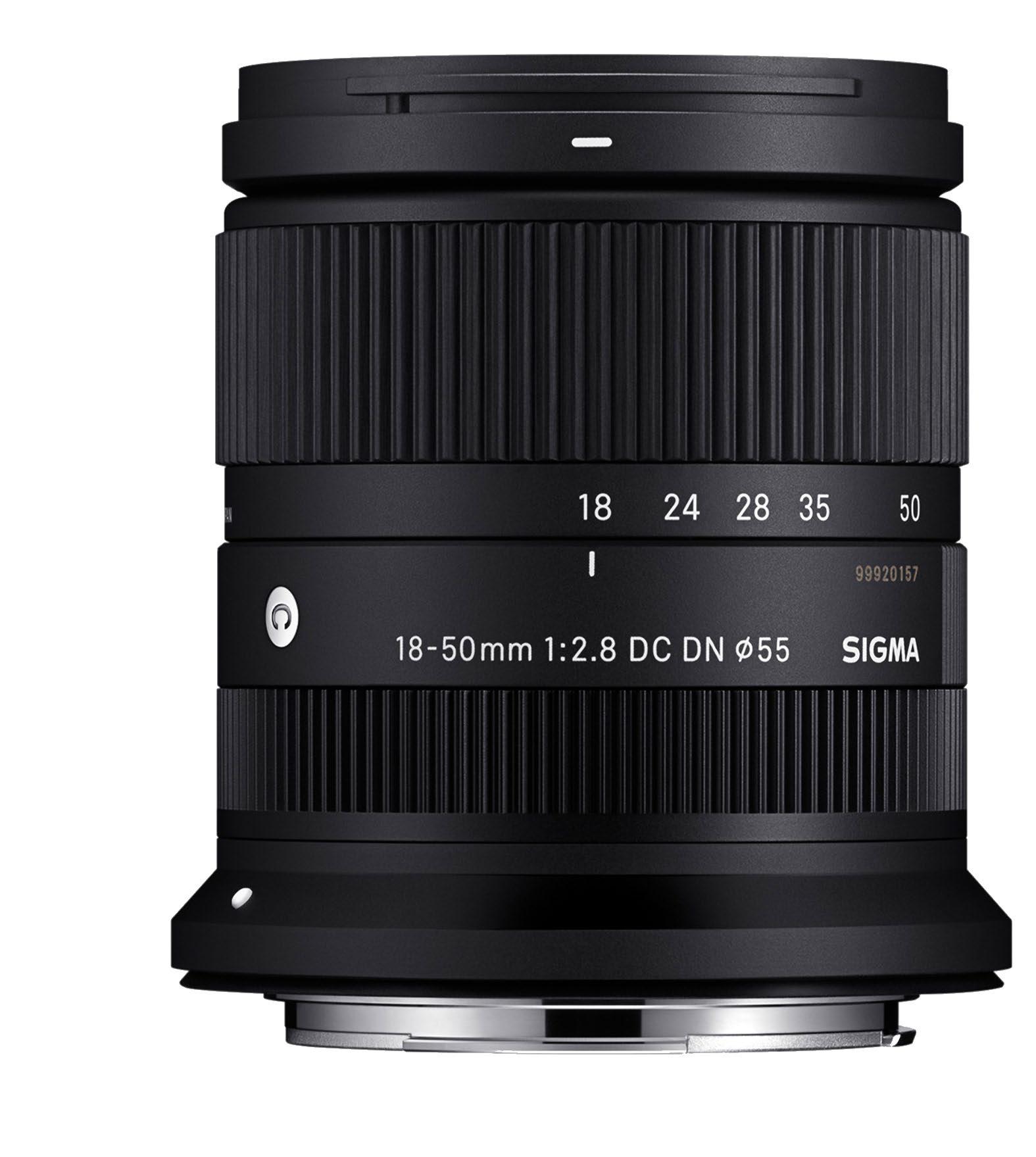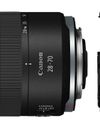
The Sigma 18-50mm f/2.8 DC DN | C (stands for Contemporary) is, first and foremost, Sigma's debut lens for the Canon RF mount. Without going into all the politics and restrictions put on third-party lens companies, we've waited six years for the first RF Sigma lens, and the wait has been worth it - provided you're an APS-C Canon EOS R mirrorless camera user.
That's because the Sigma 18-50mm f/2.8 is specifically an RF-S lens. Which means that, while you can use it on full-frame EOS R cameras in crop mode, it has been designed for APS-C bodies like the Canon EOS R7, R10, R50 and R100.
With an equivalent focal length of 28-80mm, weather sealing and a constant f/2.8 aperture, this is essentially a standard trinity lens for Canon's APS-C cameras - and thanks to Sigma's incredible engineering, it's barely bigger than one of those tiny cans of tonic you get for mixing cocktails.
All this does come with some optical compromises, though whether you'll really notice them is another matter.
Right now, it doesn't have any direct competitors, with the closest alternative being the Canon RF-S 18-45mm f/4.5-6.3 IS STMtypically sold as a kit lens with APS-C EOS R bodies, and selling for a lower price of £339, compared with £479 for Sigma's faster 18-50mm f/2.8 lens.
Bu hikaye PhotoPlus : The Canon Magazine dergisinin October 2024 sayısından alınmıştır.
Start your 7-day Magzter GOLD free trial to access thousands of curated premium stories, and 9,000+ magazines and newspapers.
Already a subscriber ? Giriş Yap
Bu hikaye PhotoPlus : The Canon Magazine dergisinin October 2024 sayısından alınmıştır.
Start your 7-day Magzter GOLD free trial to access thousands of curated premium stories, and 9,000+ magazines and newspapers.
Already a subscriber? Giriş Yap

The Art of Copying Art - James Paterson shows you how to use your Canon gear to capture artwork and paintings the right way with simple camera and lighting skills
Whether you want to capture a painting like the above, digitise old prints or reproduce any kind of canvas, there's real skill in capturing artwork with your camera. Not only do you need the colours to be accurate, you also need to master the spread, angle and quality of the light to minimise glare and show the work at its best.This painting by the artist Bryan Hanlon has a wonderfully subtle colour palette. To reproduce the painting in print and digital form, it needs to be captured in the right way.

Fright night
Canon photographer and digital artist Alexander loves to craft incredible fantasy scenes with a spooky horror twist

Sharpen your shots with DPP
Sharpening a digital image also increases contrast at the edge of details

CANON ImagePrograf PRO-1100
Deeper blacks, better bronzing, greater lifespan and 5G Wi-Fi -Canon's new printer is full of new tech, says

Canon's new 'kit lens' is actually a half-price f/2.8 trinity lens!
The Canon RF 28-70mm F2.8 IS STM lacks a red ring, but borrows premium features from its L-series siblings

DREW GIBSON
Pro motorsports photographer Drew on why he hasn't (yet) switched to Canon's mirrorless system, why old-school techniques can be the most reliable, and the lessons learned from more than a decade shooting the world's biggest car brands

Up in smoke
Make a smoky shape in Affinity Photo and get to grips with the amazing Liquify Persona under the guidance of James Paterson

Expand your creativity with Generative Fill
Photoshop's Al-powered feature brings revolutionary new tools to image editing. James Paterson reveals all...

Turn your images into vintage postcards
Wish you were here? Sean McCormack explains how you can give your summer photographs a vintage postcard look

The Angel Malibu
Light painting an American movie producer in the Wadi Rum Desert in Jordan was a highly unlikely evening out for David!